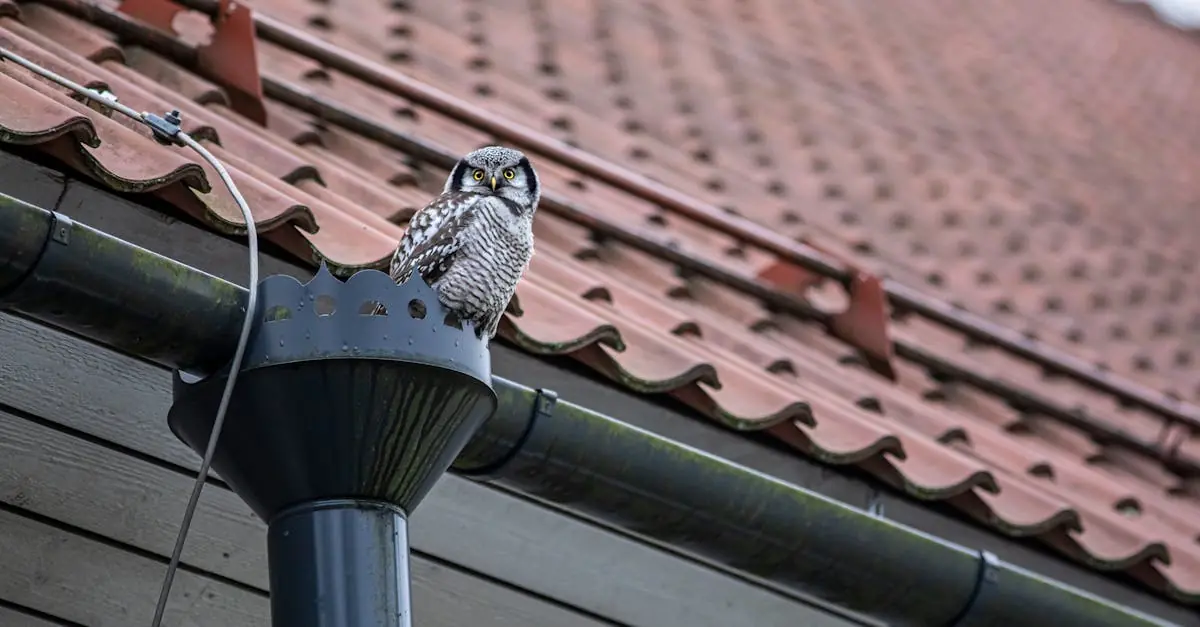Table of Contents
ToggleImagine transforming those old rain gutters into a whimsical garden that not only saves space but also adds a splash of creativity to your outdoor decor. A rain gutter garden isn’t just an eco-friendly solution; it’s a fun way to grow herbs, flowers, and even veggies without the hassle of traditional gardening. Who knew that the unsightly gutters hanging off your roof could become the star of your garden?
What Is a Rain Gutter Garden?
A rain gutter garden utilizes old rain gutters for gardening, providing a creative and space-efficient solution. This method allows individuals to cultivate herbs, flowers, and vegetables in a compact form. With minimal space requirements, this gardening style suits urban environments and smaller yards. Each gutter acts as a planter, enabling efficient drainage and preventing overwatering.
Repurposing rain gutters also offers environmental benefits. It reduces waste by turning discarded materials into functional gardening components. Rain gutter gardens enhance aesthetics, transforming plain gutters into charming features that complement outdoor decor.
Growing plants in gutters is straightforward. They can be mounted on walls, fences, or vertical structures, maximizing available space. Selecting appropriate plants ensures successful growth; herbs like basil and mint thrive in these conditions. Vegetables such as lettuce and radishes also adapt well to gutter gardening.
Understanding the maintenance involved is essential. Regular watering and monitoring of soil moisture guarantee healthy plants. Using a lightweight potting mix aids in drainage while supporting root development.
Rain gutter gardens contribute to sustainability. They promote local food production and reduce reliance on store-bought produce. By incorporating rain water collection systems, gardeners can further enhance this eco-friendly practice.
Overall, a rain gutter garden represents a practical solution for maximizing gardening potential in limited spaces, combining utility with visual appeal.
Benefits of a Rain Gutter Garden
Rain gutter gardens offer numerous advantages, particularly for those with limited gardening space. This innovative solution maximizes the potential for growing various plants, making it ideal for urban settings.
Space Efficiency
Space efficiency ranks high among the benefits of a rain gutter garden. Using vertical space allows individuals to transform unused areas into productive gardens. Gutter planters can mount on walls, fences, or railings, saving valuable ground space. Growing plants in a compact area enhances accessibility while maintaining a lush garden aesthetic. Each gutter provides ample planting area for a variety of herbs or vegetables, making this method a smart choice for small yards or balconies.
Cost-Effective Gardening
Cost-effective gardening represents another significant advantage of rain gutter gardens. Repurposing old rain gutters reduces material costs while minimizing waste. It eliminates the need for traditional planters or large garden beds, lowering overall expenses. Lightweight potting mixes can further decrease costs and simplify transportation. Growing one’s own herbs and vegetables greatly reduces grocery bills, especially for frequent consumers of fresh produce. Investing in a rain gutter garden yields both financial savings and sustainable food production, making it an appealing option for many gardeners.
How to Create a Rain Gutter Garden
Creating a rain gutter garden involves a straightforward approach that combines creativity and practicality. Follow these steps to set up a productive and visually appealing garden.
Choosing the Right Location
Selecting an appropriate location is crucial for a rain gutter garden. Opt for spots that receive ample sunlight, ideally six to eight hours daily. Positioning gutters on walls or fences maximizes exposure without taking up ground space. Ensure the site has easy access to water for regular maintenance. Avoid areas prone to excessive wind, as strong gusts can damage delicate plants.
Materials Needed
Gathering the necessary materials simplifies the process of building a rain gutter garden. Use old rain gutters, preferably made from aluminum or vinyl, for durability. Purchase brackets or hangers to secure the gutters in place. A lightweight potting mix promotes healthy plant growth, while suitable plants include herbs like basil and vegetables such as cherry tomatoes. Include a drip tray to catch excess water and protect surfaces from drainage.
Step-by-Step Instructions
Follow these step-by-step instructions to successfully create a rain gutter garden. Begin by cutting the gutters to desired lengths, typically two to four feet each. Next, attach brackets to walls or fences at a slightly declining angle to facilitate drainage. Fill the gutters with potting mix, leaving some space at the top. Plant chosen herbs or vegetables evenly across the gutter. Water the plants thoroughly after planting and check moisture levels regularly to ensure proper growth.
Maintenance Tips for Rain Gutter Gardens
Maintaining a rain gutter garden ensures healthy plant growth and maximizes efficiency. Attention to several key aspects will enhance overall productivity.
Watering and Drainage Considerations
Watering remains crucial for rain gutter gardens. Regular checks on soil moisture promote strong root development. Additional evaporation happens quickly in gutters, so moisture levels should be monitored daily, especially during hot weather. When filling gutters, a lightweight potting mix aids drainage while retaining moisture. Gutters should be angled slightly to allow for optimal drainage, preventing root rot. Ensuring sufficient water supply and proper drainage establishes a healthy environment for herbs and vegetables.
Pest Control
Pest control requires proactive measures in rain gutter gardens. Regular inspections detect any signs of pest infestations early. Companion planting offers benefits, as certain plants can deter harmful insects. Using organic pesticides helps maintain the garden’s eco-friendly approach. Introducing beneficial insects, like ladybugs, contributes to natural pest control. Keeping the area clean by removing dead leaves and debris minimizes pest habitats. Implementing these strategies protects plant health and promotes growth in rain gutter gardens.
Rain gutter gardens offer a unique and efficient way to embrace gardening even in limited spaces. By repurposing old gutters, individuals can create vibrant vertical gardens that not only enhance their outdoor aesthetics but also contribute to sustainability. This innovative approach encourages local food production and reduces waste while providing an easy-to-maintain gardening solution.
With the right plants and proper care, a rain gutter garden can flourish, allowing anyone to enjoy the benefits of homegrown herbs and vegetables. It’s a practical choice for urban dwellers and gardening enthusiasts alike, proving that creativity and resourcefulness can lead to beautiful and productive outdoor spaces.







